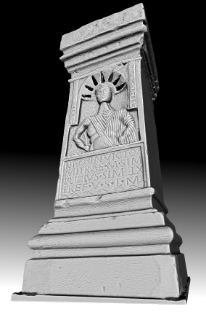Research

During the course of FREDHI, a number of discrete projects were implemented and completed, each of which generated traditional and digital outputs.
Hadrian's Wall: Life on the Roman Frontier MOOC
FREDHI was integral to the delivery of Newcastle University's first MOOC (massive open on-line course), Hadrian's Wall: Life on the Roman Frontier. The course has been run three times between September 2014 and December 2015, and features the latest research presented by the experts from Newcastle University and other institutions. Content includes written articles, traditional illustrations and photographs, videos, interactive exercises, quizes and tests. Students of all ages (from their teens to their 90s) from around the world have participated in the course, adding to and sharing in our enthusiasm for Hadrian's Wall.
Hadrian's Wall Study Tours
Emerging from the success of the MOOC, FREDHI offers a site-based study tour of Hadrian's Wall over the course of three days. Informatoin regarding the tours can be found here.
The course is designed to provide an on-the-ground understanding of the monumental complex of Hadrian's Wall, so that the participant can better 'read' the archaeological remains visible and contextualise the Wall within the history of Roman Britain and the Roman Empire more generally.
NU Digital Heritage
NU Digital Heritage is a project that seeks to integrate the latest in 3D-scanning technology to deliver professional-grade 3D models for use in research, museum and classroom environments. Support was provided from Newcastle University's Higher Education Innovation Fund and through the office of the Dean for Research and Innovation. Wessex Archaeology (North) was contracted to work on data capture and processing. Access to collections was provided by our partners, Hexham Abbey, the Society of Antiquaries of Newcastle upon Tyne, and Tyne & Wear Archives & Museums.
The project has delivered approximately 50 models of Roman stone monuments (including altars, tombstones, building inscriptions, and sculptures) and 10 models of artefacts. These models can be found on the NU Digital Heritage website and are available for purchase under personal, educational and commercial licences along with some free content. The project has produced other outputs, including:
- a conference paper delivered at the 23rd International Congress of Roman Frontier Studies in Ingolstadt, Bavaria in September 2015
- a conference paper delivered at the 19th Roman Military Equipment Conference (RoMEC) in St Andrews, Scotland in June 2016
- featured in British Archaeology magazine, issue 142 (May/June 2015)
- a paper in Hadrian's Wall Archaeology magazine, issue 6 (2015)
- two videos featuring animation of the scanned stone monuments and artefacts produced by John McCarthy of Wessex Archaeology
- the stone monuments
https://www.youtube.com/watch?v=J5DjzWCzgr0
- the artefacts
Explore Hadrian's Wall (at Roman Newcastle)
The latest archaeological evidence for Hadrian's Wall in Newcastle city centre was used as the basis in the creation of an augmented reality app. Data was provided by Dr David Heslop of Newcastle City Council, and the app was constructed by Iwan Peverett and Alberto Foglia.
The curtain of the Wall, a turret, milecastle, and the fort of Hadrian's Wall can be explored in a 3D virtual environment on an iPhone while walking through Newcastle city centre via GPS navigation functionality or remotely. The explorer can simply wander among the buildings, or use click points to access two levels of information and examine alternative reconstructions at selected locations, such as the turret and Wall curtain.
The app can be downloaded for free:
- from iTunes:
https://itunes.apple.com/us/app/explore-hadrians-wall/id1016336484?mt=8
- for PC; you may need to install the Unity Web Player to run the app:
https://mooc-images.ncl.ac.uk/hadrian/explore260615/Explore%20Hadrian's%20Wall%20-%20Web.html
Mithraeum
A virtual environment featuring a detailed reconstruction of a mithraeum - a temple dedicated to the worship of the god Mithras - was constructed using archaeological data from a range of sites along Hadrian's Wall. Data was provide by the Society of Antiquaries of Newcastle upon Tyne and further incorporated digital data generated through NU Digital Heritage. The environment was built by Iwan Peverett and Soluis.
Final technical details are still being implemented in the simulation.
Hadrian's Wall LiDAR Assessment
An assessment of the Envorinment Agency's LiDAR data for the Hadrian's Wall corridor was carried out on behalf of BBC History. The report is available below, with permission of the BBC.
The primary aim of the work was to assess the utility of existing LiDAR data (as of January 2015) to identify new archaeological sites and enhance understanding of Hadrian's Wall and its related archaeology.
 Hadrian's Wall LiDAR Assessment
PDF 2,360Kb
Hadrian's Wall LiDAR Assessment
PDF 2,360Kb
This report provides an assessment of the potential of LiDAR from the Hadrian's Wall corridor to identify new sites and enhance the current knowledge of Hadrian's Wall and its related archaeology.
